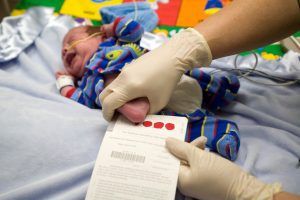Carl Zimmer in The New York Times:
 In a study carried out over the summer, a group of volunteers drank a white, peppermint-ish concoction laced with billions of bacteria. The microbes had been engineered to break down a naturally occurring toxin in the blood. The vast majority of us can do this without any help. But for those who cannot, these microbes may someday become a living medicine. The trial marks an important milestone in a promising scientific field known as synthetic biology. Two decades ago, researchers started to tinker with living things the way engineers tinker with electronics. They took advantage of the fact that genes typically don’t work in isolation. Instead, many genes work together, activating and deactivating one another. Synthetic biologists manipulated these communications, creating cells that respond to new signals or respond in new ways.
In a study carried out over the summer, a group of volunteers drank a white, peppermint-ish concoction laced with billions of bacteria. The microbes had been engineered to break down a naturally occurring toxin in the blood. The vast majority of us can do this without any help. But for those who cannot, these microbes may someday become a living medicine. The trial marks an important milestone in a promising scientific field known as synthetic biology. Two decades ago, researchers started to tinker with living things the way engineers tinker with electronics. They took advantage of the fact that genes typically don’t work in isolation. Instead, many genes work together, activating and deactivating one another. Synthetic biologists manipulated these communications, creating cells that respond to new signals or respond in new ways.
Until now, the biggest impact has been industrial. Companies are using engineered bacteria as miniature factories, assembling complex molecules like antibiotics or compounds used to make clothing. In recent years, though, a number of research teams have turned their attention inward. They want to use synthetic biology to fashion microbes that enter our bodies and treat us from the inside. The bacterial concoction that volunteers drank this summer — tested by the company Synlogic — may become the first synthetic biology-based medical treatment to gain approval by the Food and Drug Administration. The bacteria are designed to treat a rare inherited disease called phenylketonuria, or PKU. People with the condition must avoid dietary protein in foods such as meat and cheese, because their bodies cannot break down a byproduct, an amino acid called phenylalanine.
More here.
